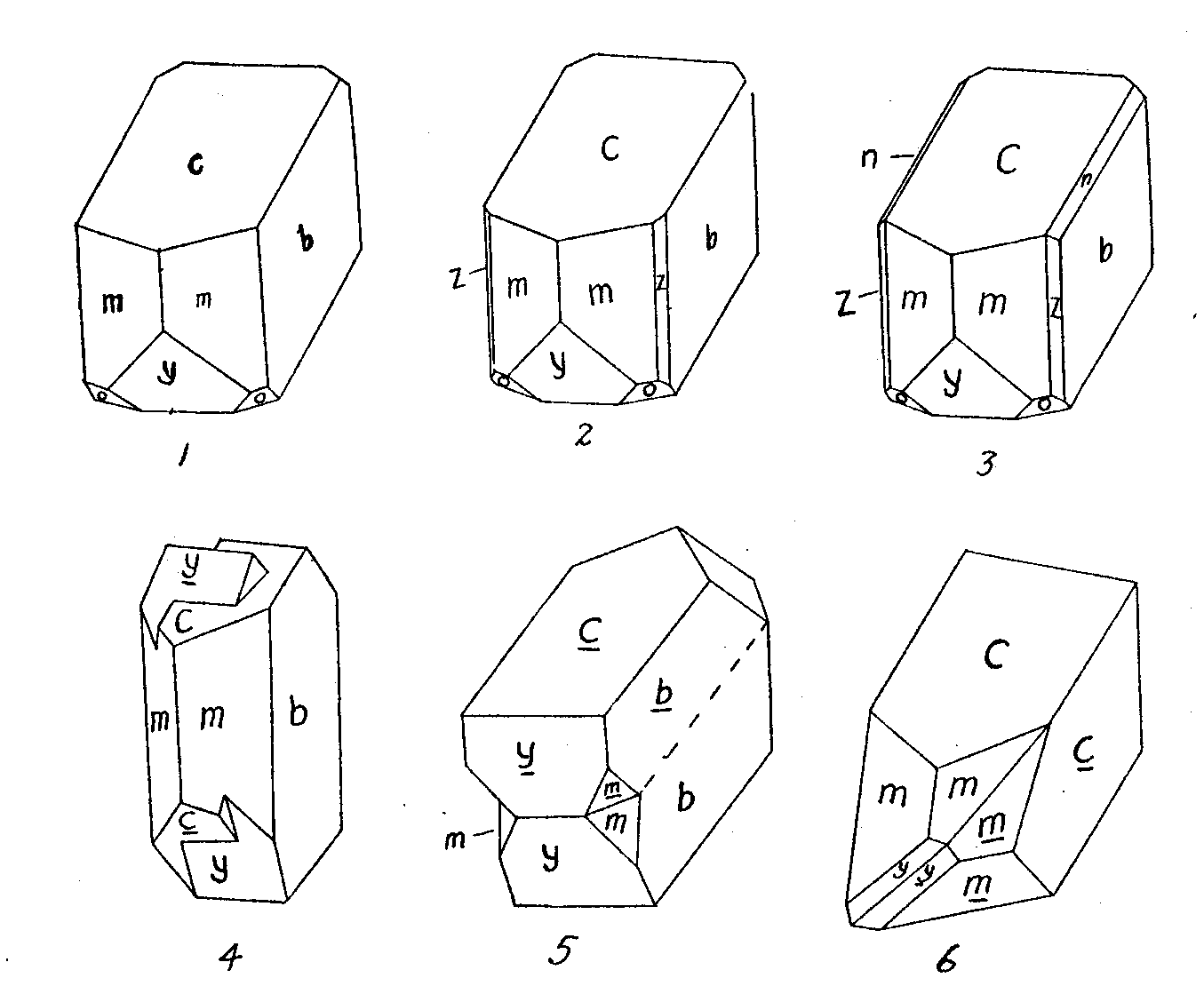| Home | AmMin | GMR | RiMG | Collectors Corner | Directory | Short Courses | |
|
|
|||||||

|
|
Volume 12, pages 256-259, 1927 EUHEDRAL ORTHOCLASE CRYSTALS FROM SIERRA BLANCA, TEXAS 1JOHN T. LONSDALE AND W. S. ADKINS, University of Texas. The crystals described in this paper were found one mile northwest of Sierra Blanca, Hudspeth County, Texas, where a dike of porphyritic igneous rock intrudes Cretaceous limestone. In this dike feldspar crystals occur as phenocrysts in a fine grained but holocrystalline groundmass. The region is arid and in the weathering of rocks disintegration is usually more in evidence than decomposition. In the rock mentioned above disintegration has loosened the feldspar crystals from the groundmass so that great numbers can be picked out, the crystals occurring much as fossils in a well weathered outcrop of sedimentary rock. The great abundance of the crystals, their perfection and relative freshness is thought to warrant a record of the locality. The crystals secured range in size from 5 mm. to 2 cm. in greatest dimensions, averaging about 1 cm. The freshest specimens are pinkish flesh colored while altered material is chalky. Examination under the microscope shows a slight alteration to kaolinite in many of the specimens but great numbers are practically unaltered. Some of the crystals are imperfect through accidents of weathering although many are perfect. For this study imperfect crystals were discarded, only euhedral ones being included. From a relatively small amount of material 556 essentially perfect crystals were secured and examined. |

Figure 1.
Figure 1 shows the types of crystals present in the collection, The forms present include
m(110), y(
The simple combination (No. 1) is the most abundant by far, while Baveno twins (No. 6) and the crystal in which both n(021) and x(130) appear (No. 3) are rare. Carlsbad (No. 4) and Mannebach (No. 5) twins are present in nearly the same abundance but are less common than the simple type. Crystals with z(130) are relatively common. The variation in abundance of the different types of crystals furnishes interesting data on the crystallization of orthoclase. It is hoped to make this feature of the study exhaustive by the addition of several thousand crystals to the collection. A chemical analysis of the feldspar, made in the Industrial Chemistry Experiment Station, University of Texas, is given below.
The analysis does not conform to the theoretical composition of orthoclase. It is believed that most of the irregularities in the result are due to impurities in the mineral which are apparent when the crystals are examined under the microscope, magnetite and an amphibole being present as inclusions in small amounts. The water is of course due to kaolinization. If iron, lime and water are disregarded and the remainder recast to 100 per cent the results correspond approximately to a soda-orthoclase as shown below.
This result approximates the composition of a soda-orthoclase but is slightly deficient in both alumina and silica or has an excess of the alkalies. The analysis is supported by the optical characters which are shown in the following table. α=1.5180 X^a=6°37' β=1.5234 Z=b γ=1.5260 2V=70° approximate The orientation and extinction angle corresponds to a soda rich orthoclase. The indices of refraction were obtained by matching liquids with the mineral and the determination of the indices of the liquids by means of the refractometer. NOTE 1 Published by the permission of the Bureau of Economic Geology, University of Texas.
|
|||||||||||||||||||||||||||||||||||||||||||||||||||||||||